Ham with his Care Bear (©2024, Deborah Clague)
My valentine and I (©2024, Deborah Clague)
Still have all my fingers (©2024, Deborah Clague)

Ham at three months (left) and four months (right) (©2024, Deborah Clague).

Ham (©2024, Deborah Clague)
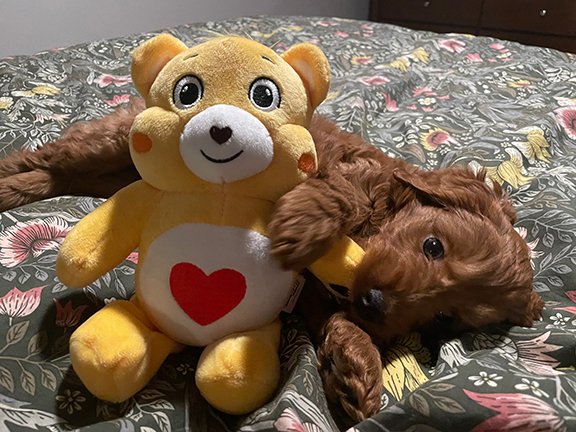
Ham with his Care Bear (©2024, Deborah Clague)
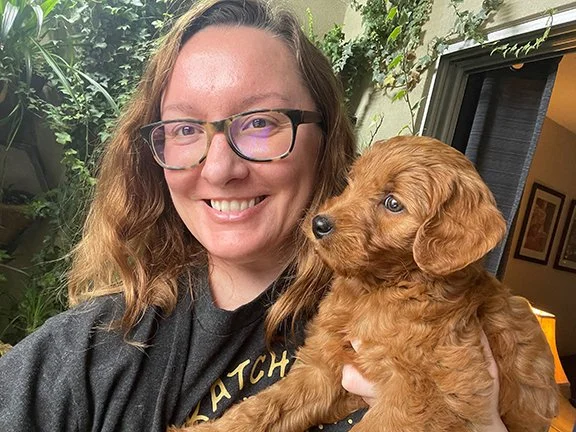
My valentine and I (©2024, Deborah Clague)
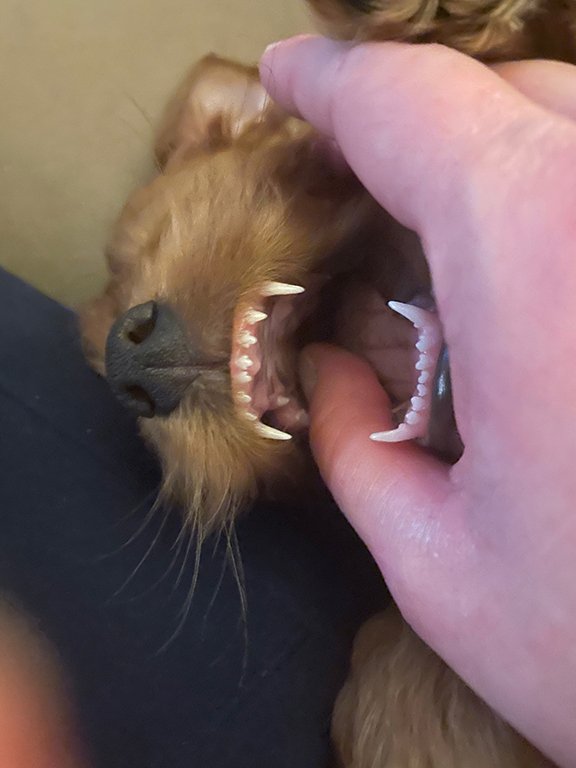
Still have all my fingers (©2024, Deborah Clague)

In The Weeds: Around the World and Behind the Scenes with Anthony Bourdain
Written by Tom Vitale
Since his untimely passing in 2018 there have been a number of books released on the life of Anthony Bourdain, each providing insight into a complex personality who inspired an audience to see the world through a new set of eyes. ‘In The Weeds’ was written by a long-time director and producer of his various travel series providing a level of intimacy and knowledge that few others would possess, including a behind-the-scenes narrative that was engrossing and, at times, outright shocking (there is one passage in particular about Tony’s behaviour that is indefensible). I am a bit disappointed to learn that what was presented on-screen didn’t always match the reality. But such is Hollywood.
Favourite line: “After years of traveling, I’d curated quite a collection of memorabilia, each item a physical manifestation of a memory, and my house had become a museum of these souvenirs from an alternate universe.”
Down the Rabbit Hole: Curious Adventures and Cautionary Tales of a Former Playboy Bunny
Written by Holly Madison
Years ago I boarded an Airbus 319 heading from Louisville to Chicago. It wasn’t a long flight but the seat next to me was vacant and I was grateful for the additional space on the small aircraft. After the last of the passengers took their seats, I wondered why we weren’t closing the gate and hitting the tarmac. About twenty minutes after our scheduled departure, another passenger joined us and sat next to me.
Making small talk, he introduced himself as Dirk Johnson and shared that his profession was a journalist who had once worked for the New York Times. ‘What an interesting person’, I thought to myself, my own life (at that point) feeling rather boring in comparison. He then told me his partner was meeting him at the airport and asked if I knew her. Her name was Christie. Christie Hefner. Admittedly the name did not ring a bell when he first said it. But then he told me who her dad was.
There are few people alive who haven’t heard of Playboy or felt its influence. It changed the culture (for better or worse depending on your personal lens). But most people haven’t had a glimpse into the inner circle, the days and nights of life at the actual Playboy Mansion, like Holly Madison has. I’d seen this book highly recommended over the years and finally decided to read it. Loving a gossipy celebrity memoir, this one was certainly interesting in that regard but the absolute lack of self-reflection (and personal accountability) coupled with the vitriol towards others was a complete turn-off. Lots of bridges burned within these pages.
Favourite line: “On camera, Kendra was spontaneous, carefree and brimming with those bumbling mishaps ripe for television. And let’s just say, when it came to Kendra, none of those dumb blonde moments ever had to be scripted.”
Get Happy: The Life of Judy Garland
Written by Gerald Clarke
Another book that kept popping up in recommendations. I never really knew much about Judy Garland. I was only knowledgeable that she played a major role in one of the most beloved films of all time. This biography taught me that her life was a tragedy almost from birth, with parents determined—at all costs–to make their children famous. From aiding teenage eating disorders to enabling drug addiction, it seemed Judy never really had a chance at normalcy.
Favourite line: “Disaster is usually woven from several threads, unrelated yet combining to form a pattern of chaos and calamity.”
Seek You: A Journey Through American Loneliness
Written and illustrated by Kristen Radtke
A beautifully written and illustrated graphic novel that examines social isolation and how the constructs of modern life exacerbate it.
Introducing the latest winner of the canine Powerball lotto – Hampton Augustus Cuddlebug Clague, a miniature goldendoodle to be henceforth known as Ham:

Ham, five-weeks-old (©Deborah Clague)

Ham, six-weeks-old (©Deborah Clague)

Someday, we’ll meet again (Illustrated by Deborah Clague, 2024).
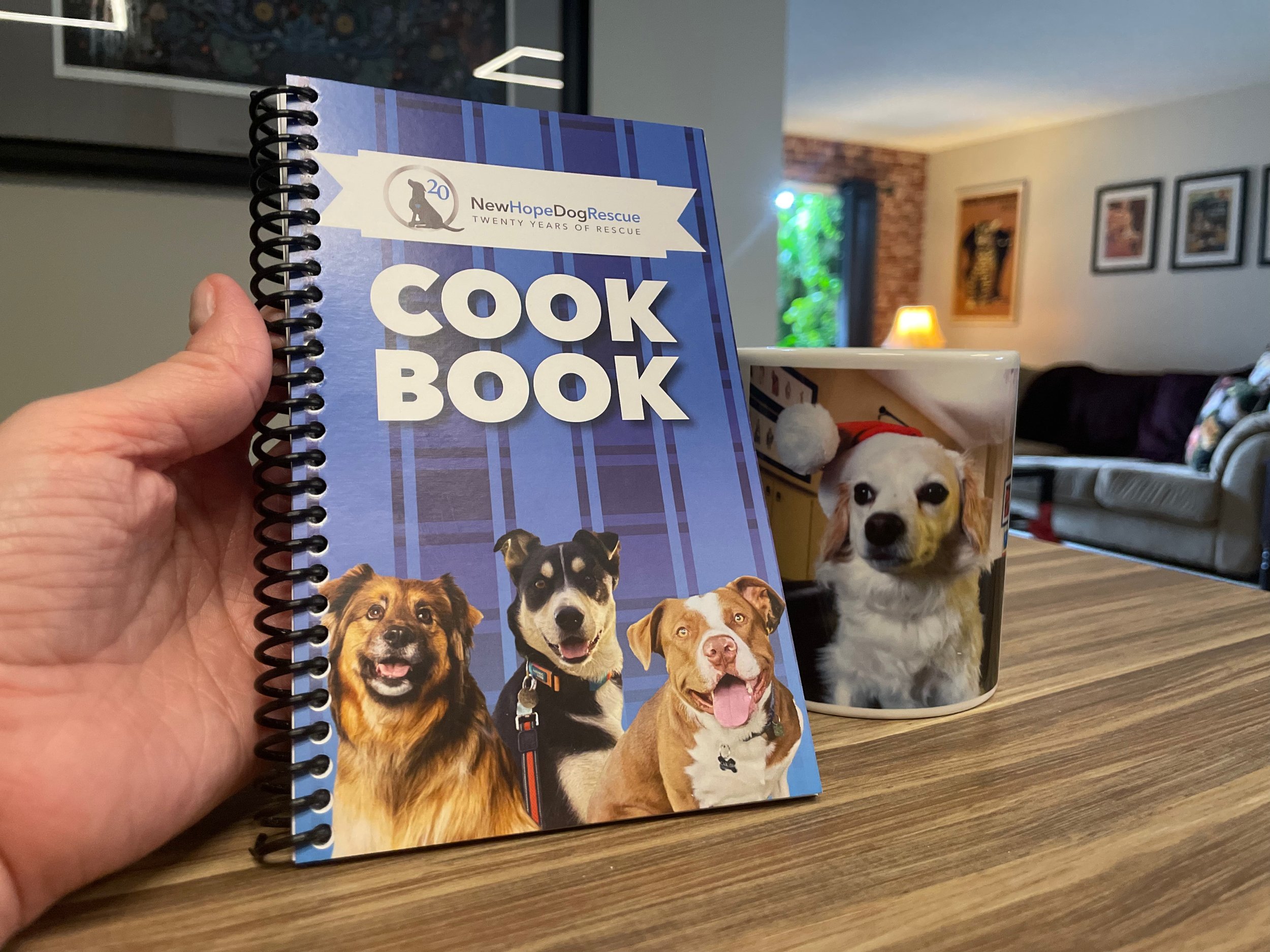
This one is for Monty (©2023, Deborah Clague).
Over the past year I have volunteered with New Hope Dog Rescue (NHDR), a registered non-profit and foster-based organization that has been rescuing and re-homing dogs in need since 2003. My role started with social media content creation and has evolved into marketing coordination. One of our recent initiatives has been the creation of a cook book in celebration of NHDR’s 20th anniversary.
The Project: The New Hope Dog Rescue 20th Anniversary Cook Book was a joint undertaking between myself and the fundraising coordinator of NHDR meant to showcase the culinary talents of our volunteers and supporters, and share the stories—happy tails—of our many adopted alumni throughout the years. At nearly 200 pages and 55+ recipes, there was something for everyone to try ... including your dog! The piece also shared the history of NHDR and their active involvement in the community which includes a First Nations spay-and-neuter program, hospital care program for those with longer-term medical needs who require assistance caring for their pet, and animal safekeeping program (ASK) for those fleeing domestic violence.
Advertising revenue supported the cost of printing. Full-page advertisements were purchased by local businesses such as BOSS Plumbing, Canine Action Project (C.A.P.), Erindale Animal Hospital, Pet Valu, Rainbow Restoration and the YXE Underground Podcast. Interior pages were printed in one colour to maximize profit. Because of this, design needed to retain readability and remain engaging for viewers.
Social media posts on the New Hope Dog Rescue channels were the only means of promotion outside of word-of-mouth. The cook book was sold at sponsor venues and events leading into the holiday season.
The result: The first print-run of two hundred cook books sold out within two weeks. A second limited print-run of one hundred additional copies was ordered to meet demand. These are also on track to be sold out by the end of the year. In total, the cook book will have raised over $6,000 for New Hope Dog Rescue. It is a success that will ensure further care and support for animal welfare in Saskatchewan ensuring these dogs find the support, medical care, and forever families they deserve.
For more information on New Hope Dog Rescue, please visit newhoperescue.org


Highway of Tears
Written by Jessica McDiarmid
In continuation of my personal learning on the treatment of Canada’s First Nations population, I recently read Highway of Tears which examines a stretch of highway in northern British Columbia that has come to symbolize the national crisis of missing and murdered Indigenous women. This book explores history of the area, shares stories and personal recollections of the MMIW, and discusses how long, systemic inaction from RCMP and government led to continued, avoidable tragedy.
Favourite line: “The widespread propensity to refer to marginalized teenagers who are victims as “women” perhaps belies, however unintentionally, the deep-seated tendency in our society to judge victims rather than perpetrators, to find reasons not to care.”
The Women in Me
Written by Britney Spears
From being one of the world’s biggest pop stars to a woman who represents the right for personal freedom and choice for those affected by poor mental health, Britney’s story is, indeed, a fascinating study. While this (presumably first) memoir is light and lacking some of the details and introspection I was hoping for, I always appreciate hearing people share their perspective. This song will also never not be a total banger transporting me straight back to my twenties. For that, I will always be intrigued.
Favourite line: “But as much as I’ll own my flaws, ultimately, I know that I am a good person. I can see now that you have to be smart enough, vicious enough, deliberate enough to play the game, and I did not know how to play the game.”
You Will Find Your People
Written by Lane Moore
I first heard of Lane Moore a few years ago and she has quickly become one of my favourite authors. Every time I read her words, I feel like I have found a kindred, empathic spirit. Someone who acts as a lighthouse for others experiencing loneliness and melancholy as an adult, and letting them know they aren’t alone. Her second book, You Will Find Your People, explores how to navigate and create meaningful friendships during a time when they become harder to maintain. It’s a subject not often talked about but perhaps more pervasive than we realize considering how isolated western society has become.
Favourite line: “Having someone you connected with briefly in a really meaningful way is still a form of friendship, one with great value in its own right, even if you feel like it should become more than that to “count”.
Steve Jobs
Written by Walter Isaacson
This book has been in my rotation for months and I am still not finished. I’m only currently on page 250 (of 577). It’s not a terrible book; far from it. Walter Isaacson is an amazing wordsmith. I’m just not sure when I will complete it as, despite being a visionary who led a team to bring us some of the greatest innovations from the past century, Steve Jobs was a terrible human being. He comes across as a ruthless, narcissist with no regard for friends, colleagues and even family. Amongst the other books I’ve recently indulged in, this biography is too much of a contrast and nothing I choose to be inspired by. One day I will return to it … but for right now, I will leave it at page 250.
Before the first snowfall, I spent a day solo hiking in Prince Albert National Park. I wasn’t alone though. I made friends with the one-eyed fox of Waskesui.

One-eyed fox at Narrows Marina, Prince Albert National Park, Saskatchewan (©2023, Deborah Clague).

Fox at Narrows Marina, Prince Albert National Park, Saskatchewan (©2023, Deborah Clague).

Fox at Narrows Marina, Prince Albert National Park, Saskatchewan (©2023, Deborah Clague).

Fox at Narrows Marina, Prince Albert National Park, Saskatchewan (©2023, Deborah Clague).

Autumn scenes at Prince Albert National Park, Saskatchewan (©2023, Deborah Clague).
It was early morning, roughly 6:00am. I’m not normally up at that time but had been awake for awhile as the room I slept in had a window facing East with the sun filtering through its gauze curtains for at least an hour prior. It seemed to signal what would become an absolutely beautiful July day. First sight I saw in the brightness as I looked over was my wee best friend, Monty, staring up at me from his own dog bed placed beside mine. “Time for a walk”, I thought to myself. As always, he seemed to know exactly what I was thinking.
The park we walked through was well-familiar from my childhood but offered pleasant surprise at that early morning hour. There was a stillness as the city prepared for the day. The wildlife, however, were visible. Monty and I counted rabbits, as a lone pelican swam in solitude at an adjacent pond. What caught my eye was the dew on the grass, glistening as the slant of light from the rising sun hit at just the right angle. It’s not something a sleepyhead like myself normally gets to observe. The quiet of that July morning left me with a simple, cherished memory that I can now only reflect wistfully on. It was such a beautiful day.
This is hard to write.
I am writing this through tears and with the knowledge that I will be editing it in the future, as a few paragraphs could never truly encapsulate what he meant to me.
Monty, my best friend and the goodest good boy I have ever known, passed away on October 5. He was two-months shy of 14 years of age (or roughly ninety-four in dog years). I am completely heartbroken.
I adopted Monty two weeks after moving to a new city. After our initial introduction, I knew that we would be the best of companions … and we were. Our bond was immediate. He helped divert depression and fill the void of loneliness in traversing an unfamiliar place. And I, in turn, loved—and spoiled!—him endlessly with affection and adventure. From leading him on hikes through the scenic Rockies to Monty helping me emotionally navigate the early, unexpected loss of a parent, he was a trusted sentry in my life with the aim of keeping me protected from ills both seen and invisible.
In later years Monty lived with my mother, acting as an unofficial therapy animal for someone beginning their own new life after being widowed. While I missed him terribly, I knew that this was needed. I always felt his gentle, sweet nature was made for assisting people in times of need.
There are parks and hidden trails in my hometown that I will forever associate with his memory because of how well we travelled them.
And I know his spirit will continue walking them with me in the future.
Longevity of life is a privilege not everyone gets to experience—and it is this understanding that helps lessen the sadness I currently feel. I am so thankful for the wonderful memories I got to experience with both my grandfather and Monty. They both lived full lives well into (their respective) old age. If I brought them as much happiness as they shared with me, then we will have both lived a wonderful life.
As I reflect on their legacies, I keep returning to the idea of “presence”; the active presence they both made to be included in the lives of others. Active engagement with the world and beings around them. Active listening to others as they speak. Active, genuine affection towards their family and loved ones. Actively being there for someone when needed. We can gain personal strength from observed lessons of their character.
May they have parted this world knowing the depth of my love for them both.
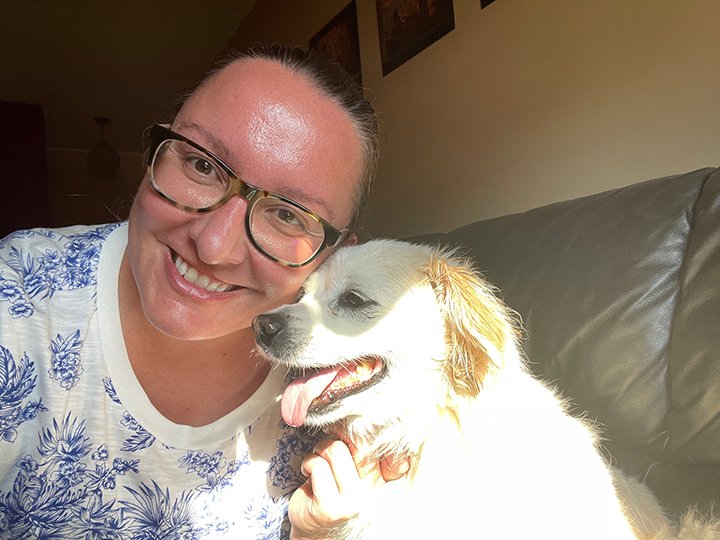
Me and my Monty this past summer (©Deborah Clague, 2023).

The first time I saw Monty in 2010 (©Deborah Clague, 2010).

My beautiful boy in 2018 (©Deborah Clague, 2018).

One of my favourite pictures of Monty. He was always smiling (©Deborah Clague, 2019).
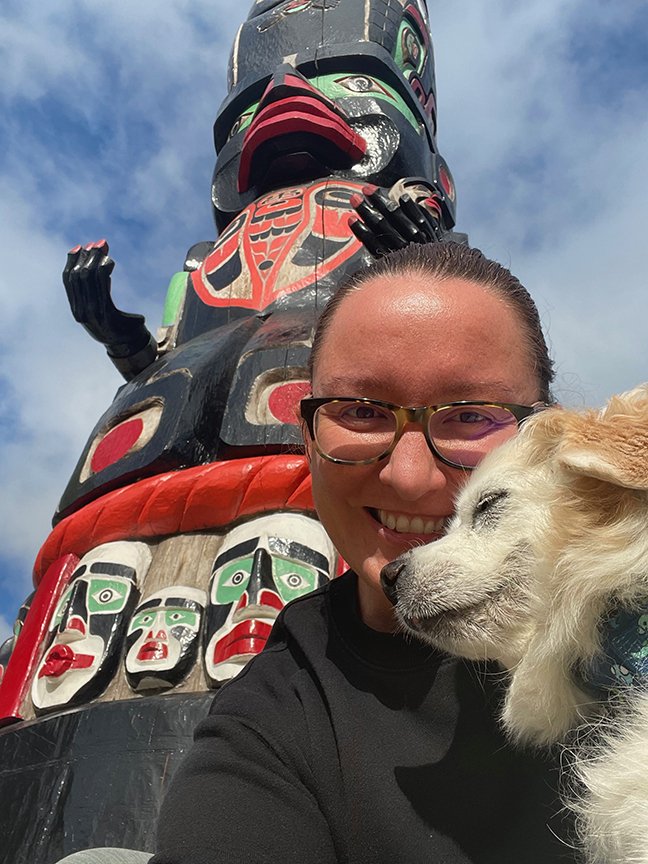
Monty and I at Assiniboine Park, Winnipeg (©Deborah Clague, 2023).
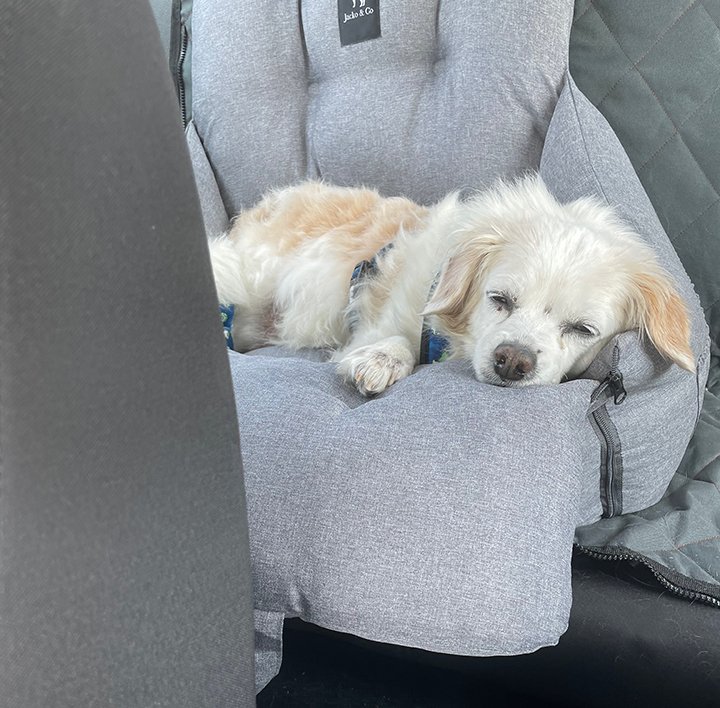
One of the last photos of my best friend in the universe, Monty (©Deborah Clague, 2023).

My grandfather, my grandmother and newborn me (©1980, Deborah Clague).
Last summer, a chance encounter resulted in meeting my extended family in Banff, Alberta. They had attended the Calgary Stampede, which my grandfather tried to visit annually in order to watch the bull-riding competitions he so loved. He was a cowboy at heart. A stoic, gentle soul with Manx roots who grew up on the Canadian prairies. Self-sufficient at a young age, he was a hard worker with strong character and moral upbringing that seemed to encapsulate the image of the good guy in old Western films. And I was related to him. I was always so proud to be of his blood.
Treating us to Tim’s (his favourite spot to converse and pass the day), conversation evolved from life in Winnipeg to memories of my father to eating potatoes … and only potatoes.
As I sipped my peppermint tea, I laughed and cracked a joke about such a diet until my aunt chimed in that my grandfather wasn’t kidding. He didn’t eat vegetables. He only ate potatoes. I looked over at him and his blue eyes twinkled with a warm smile as he confirmed it again.
“There are a lot of ways to eat potatoes” he remarked. And yes, I agreed that there was.
At ninety-two-years-old (at the time), still active and lucid, I figured his lived experience with this starchy diet was a valuable indicator of the stock which I bore.
I have many valuable memories of my grandfather. Growing up I spent a lot of time at his small home, amusing myself with the toy of the day as he sat in his recliner and held court with my father and other guests. Christmas was always an event. My entire extended family would congregate with homemade potluck as a turkey cooked in the oven and then spend hours catching up with each other, gossiping and sometimes arguing about politics. Between the wall of noise, multicoloured lights, and fragrant pine air of a real Christmas tree, it would feel like sensory overload of the best kind.
One thing missing was his partner, my grandmother Beatrice. She was the love of his life. I never got to know her. She passed away from breast cancer at the age of forty-nine in 1981, right after I was born. He never remarried, nor sought out female companionship, ever again.
Life was rich though. In later years, after retiring from his blue-collar career, my grandfather took opportunity to see the world. His favoured spots seemed to be in warm climates where he could relax under a palm tree and gaze upon the Pacific. Hawaii, in particular, seemed to call his name. Oahu was his home for several weeks during the long, dark and infamously cold Winnipeg winters. I sometimes think the “travel bug” is more a gene for exploration and adventure that he passed onto me. He was a cowboy in spirit after all.
The last time I saw my grandfather was that summer of 2022 in Banff. In retrospect, it felt seminal. We were there to pay tribute to my father by scattering his ashes at a place he so loved, under the shadow of mountains with pine once again perfuming the air and a surprise visit from a big-horned sheep who curiously watched our makeshift ceremony from afar. The weather was beautiful and by chance–or by angels–we were able to reconnect as our paths crossed thousands of kilometres from home. Fate had intervened and given us a beautiful goodbye.
My beloved grandfather passed away on September 20, seven days after his ninety-fourth birthday.

My grandfather, my dad and me at Winnipeg airport (©2002, Deborah Clague).